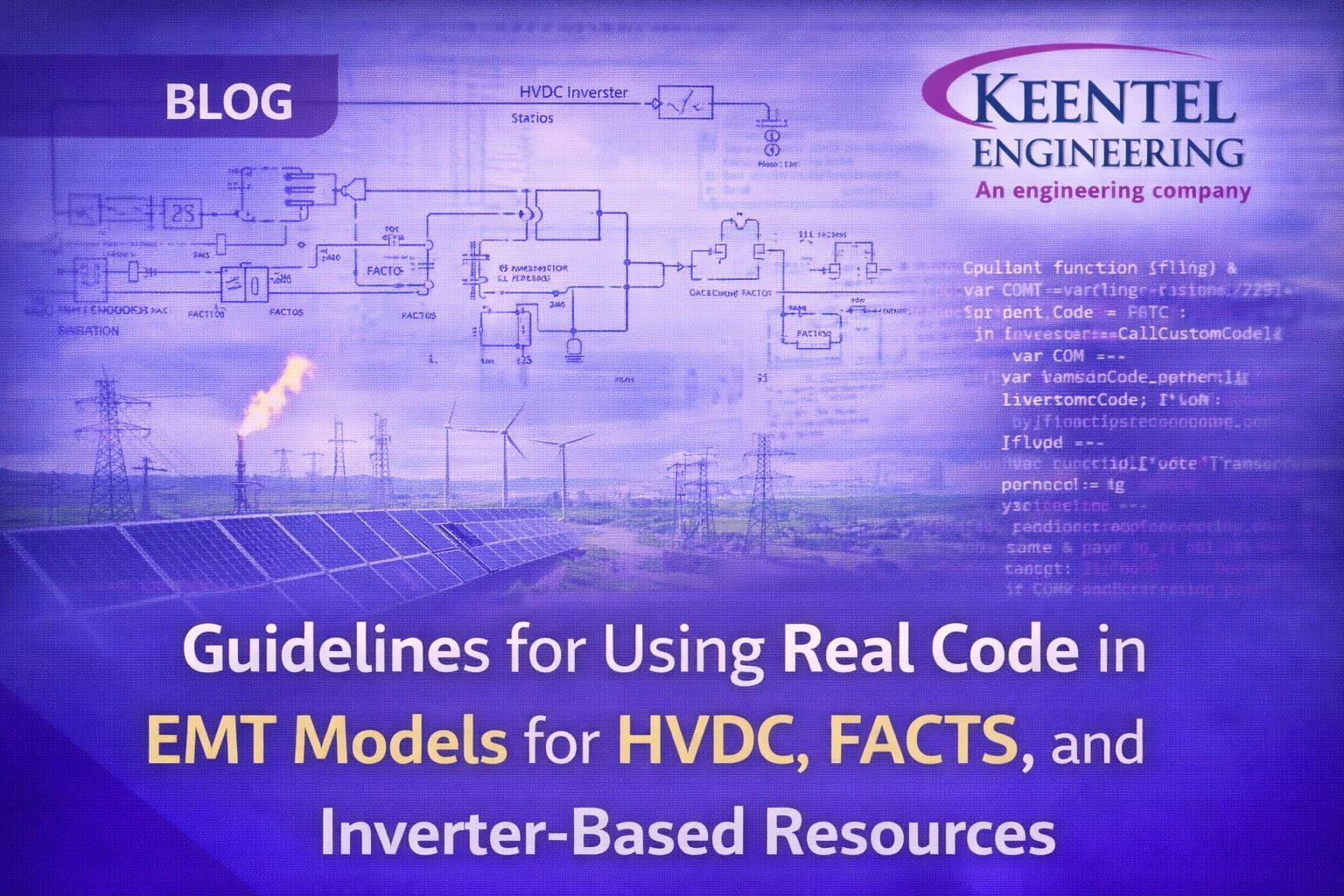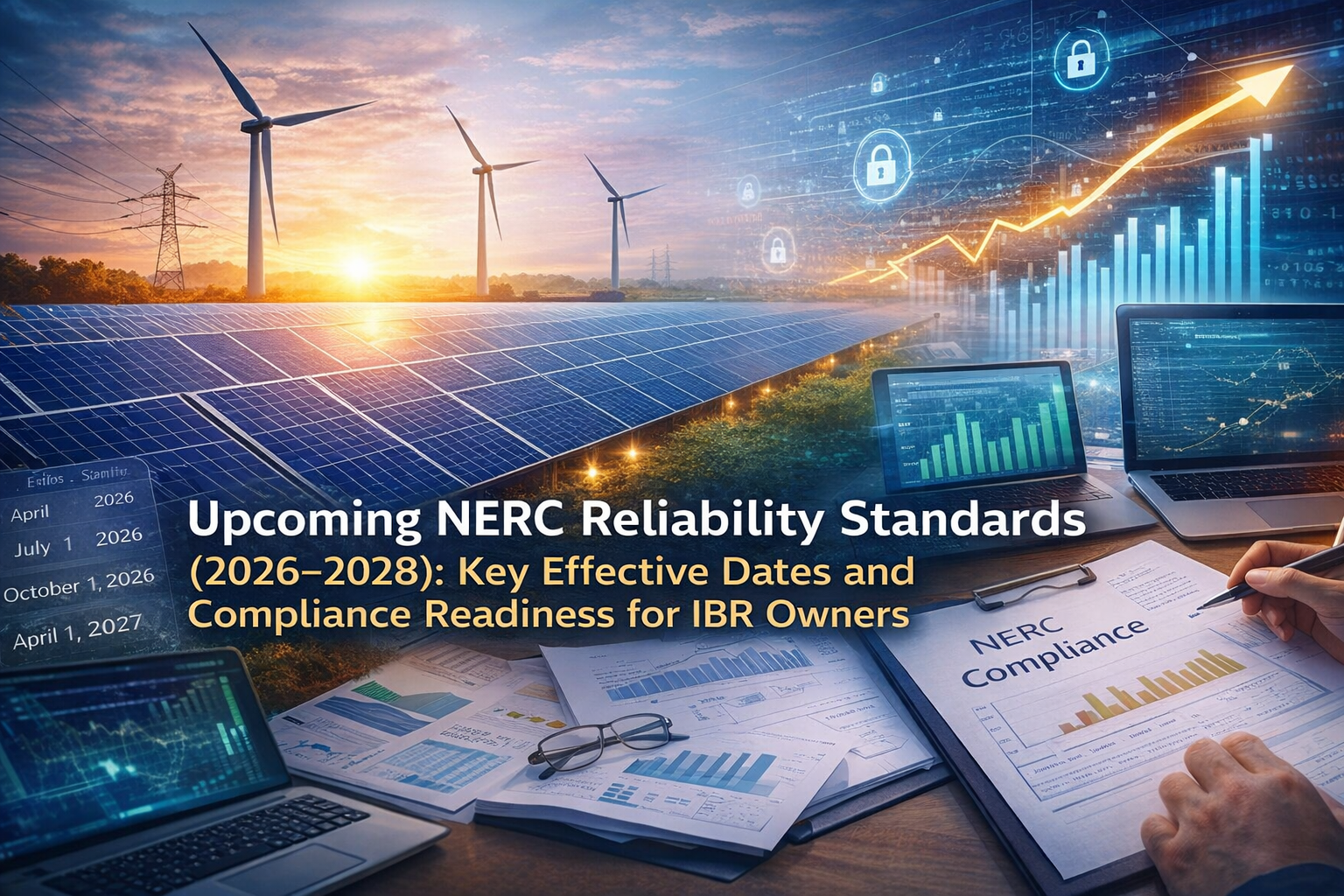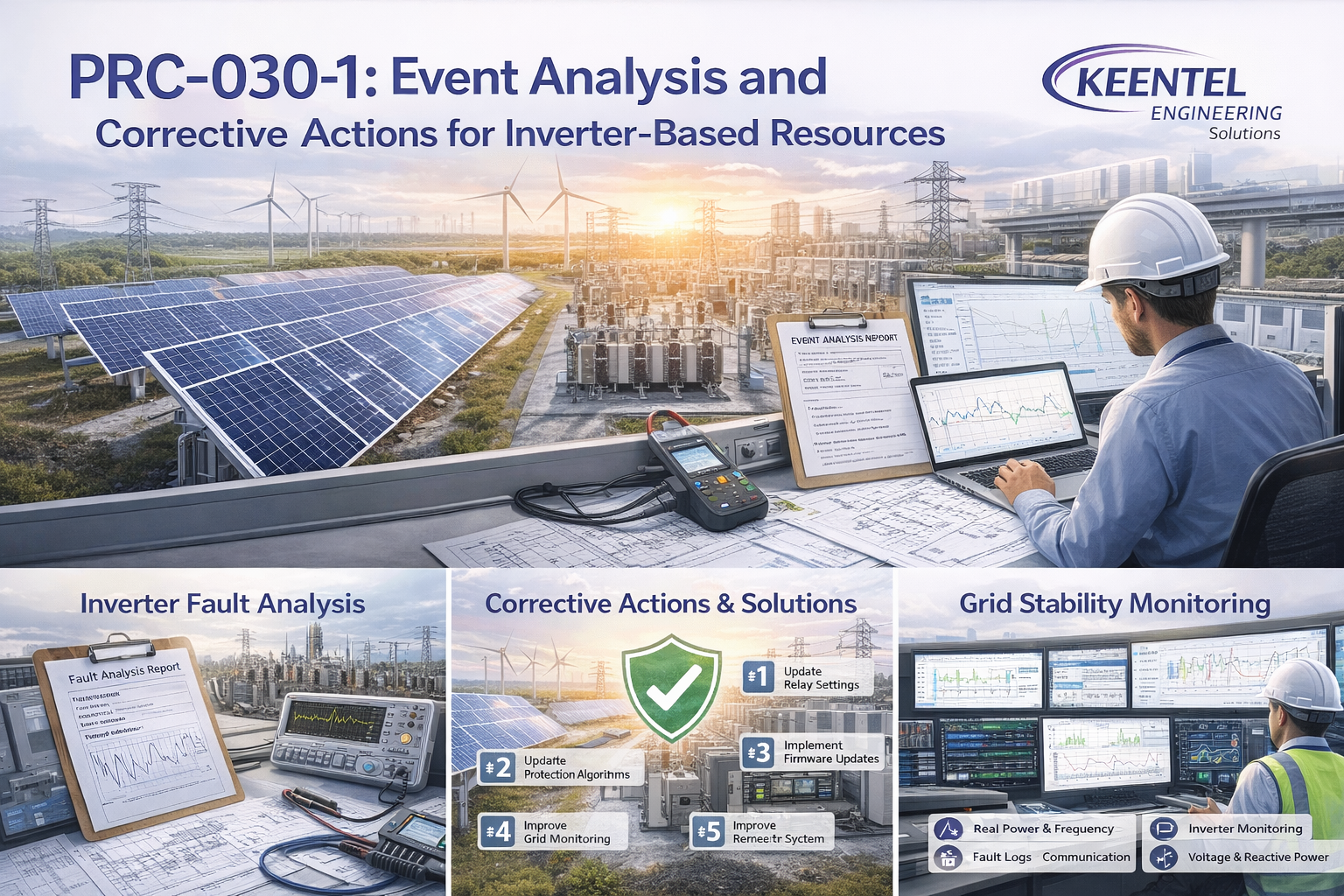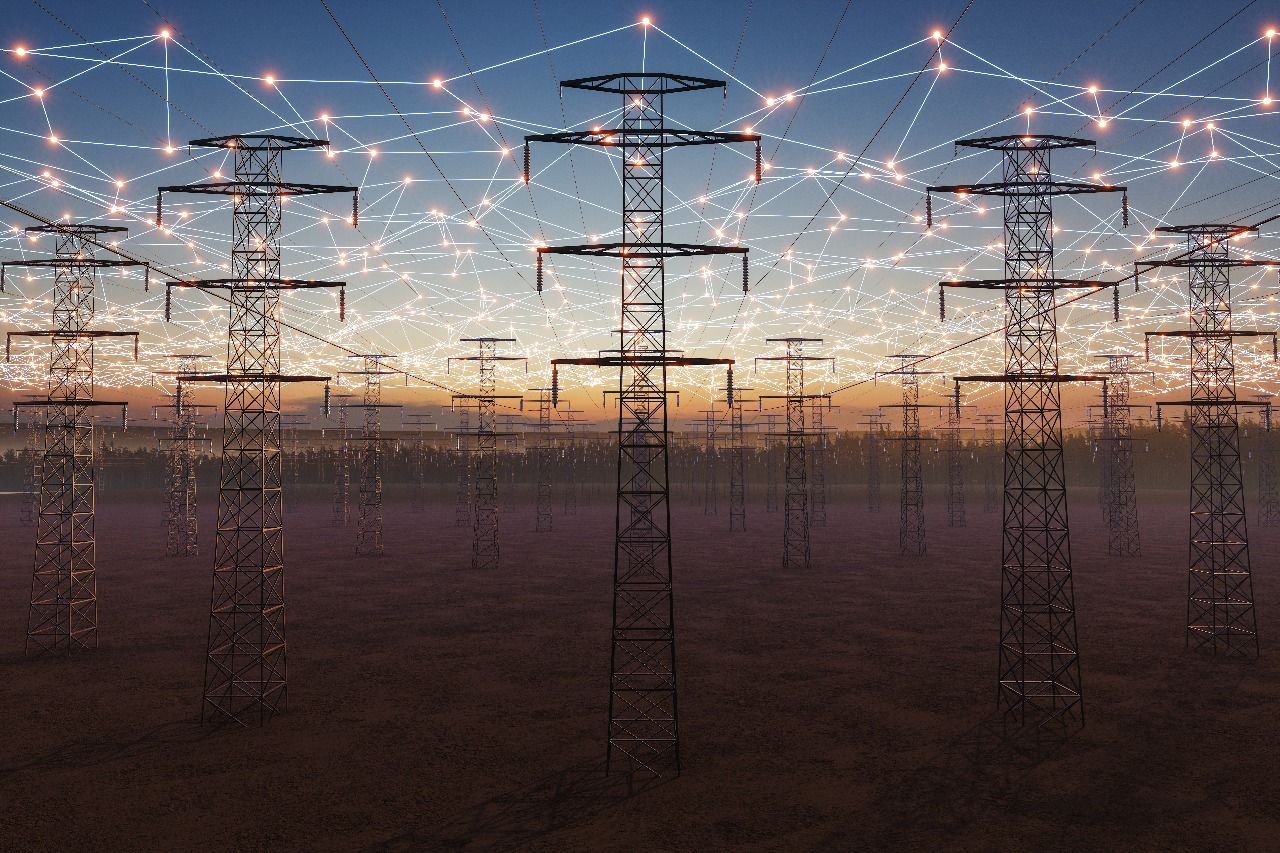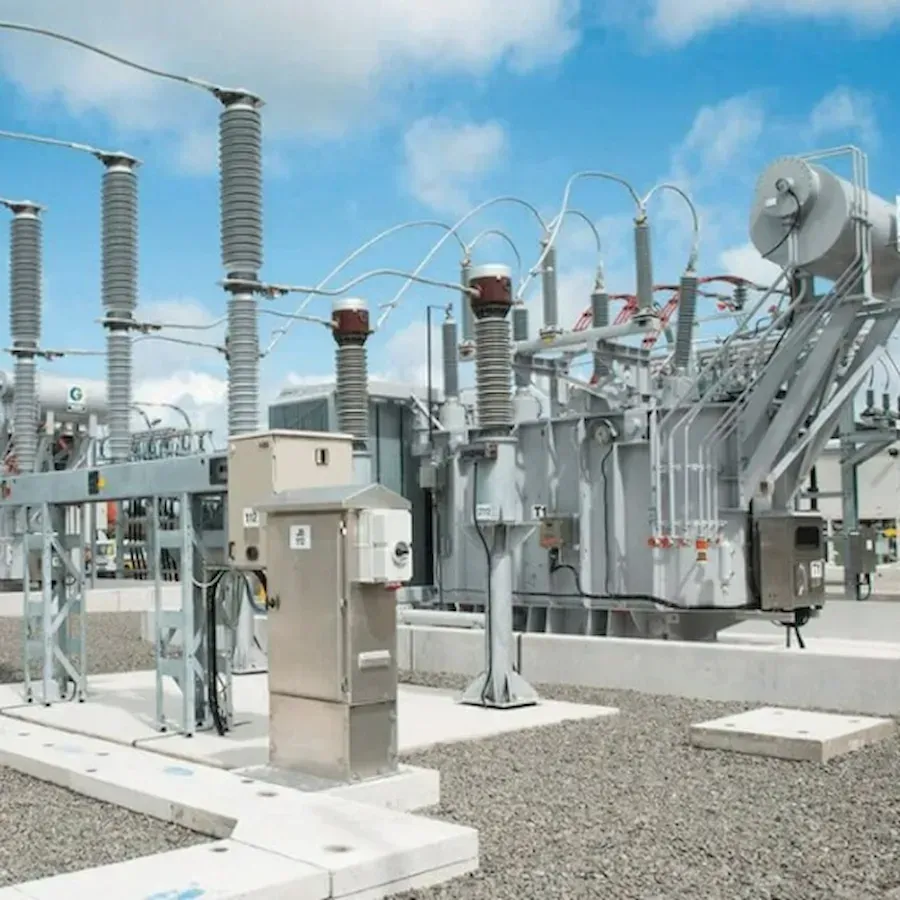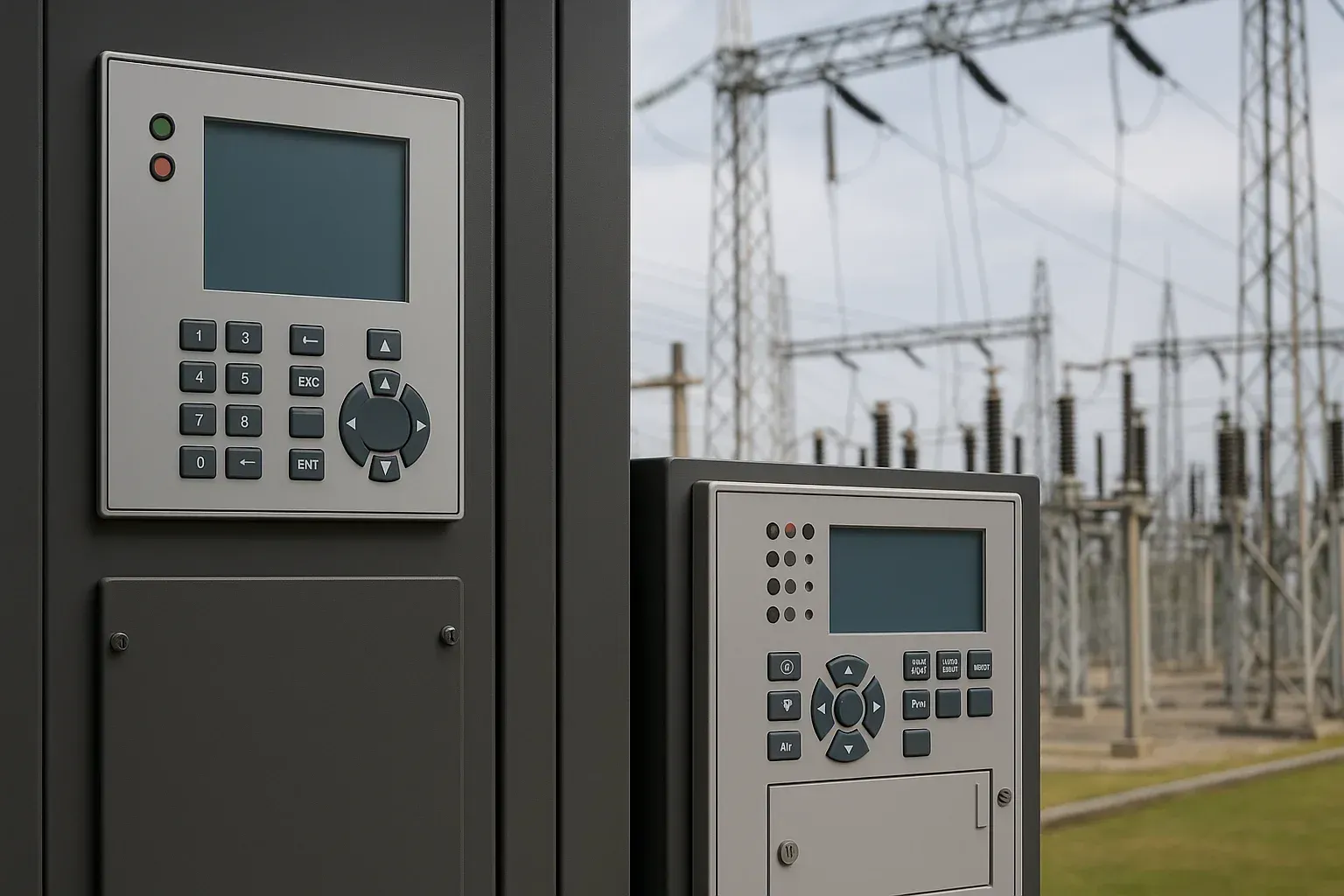A Coordinated Electric System Interconnection Review—the utility’s deep-dive on technical and cost impacts of your project.
Challenge: Frequent false tripping using conventional electromechanical relays
Solution: SEL-487E integration with multi-terminal differential protection and dynamic inrush restraint
Result: 90% reduction in false trips, saving over $250,000 in downtime
PVsyst v8 for Grid-Connected Solar System Design: Simulation, Shading, and Yield Optimization Guide
August 6, 2025 | Blog
Introduction to PVsyst v8 and Grid-Connected PV Design
PVsyst v8 is the leading solar simulation software used worldwide for the design, modeling, and performance analysis of grid-connected photovoltaic (PV) systems. It is a trusted tool by EPC contractors, utility-scale solar developers, and engineering consultants to generate accurate energy yield predictions and produce bankable reports that support solar project financing and construction.
At
Keentel Engineering, we leverage the full capabilities of PVsyst v8 to deliver high-precision grid-connected solar system designs. Our technical expertise ensures every simulation aligns with both engineering standards and financial expectations. This guide walks you through the complete PVsyst v8 workflow — from project setup and weather data import to advanced bifacial module modeling, shading analysis, and P50/P90 uncertainty evaluations.
Setting Up a PVsyst v8 Project
Creating a New Grid-Connected PV System in PVsyst
Starting a new simulation project in PVsyst v8 begins with selecting the correct system type. From the main interface:
- Go to Project Design → Grid-Connected.
- Enter your project name, site coordinates, and a descriptive project note for future reference.
- For most utility-scale applications, ensure “Grid-Connected without Storage” is selected — unless you plan to integrate battery storage for peak shaving or self-consumption.
For more information on battery storage integration, explore our
Utility-Scale Battery Energy Storage Services.
Importing and Selecting High-Quality Weather Data
Accurate meteorological data is the backbone of reliable PV simulation. PVsyst v8 supports several weather data sources:
- Meteonorm 8.0 (built-in with interpolation for global coverage).
- External TMY2/TMY3 files from sources like NREL, SolarGIS, or PVGIS.
- On-site measured weather data for bankable and investor-grade simulations.
For utility-scale PV simulation, we recommend combining one full year of site-measured data with long-term satellite datasets to improve yield forecast accuracy.
Configuring Project Parameters for Bankable Reports
Before running your simulation, configure key project parameters to meet bankability standards:
- Define the DC system size (in kWp) based on design goals.
- Set the project lifetime for long-term performance and LCOE (Levelized Cost of Energy) analysis.
- Customize output preferences, such as CSV file exports, for detailed post-processing and reporting.
Need help running simulations for financial feasibility? Learn more about our Owner’s Engineer Services, supporting investors, developers, and EPCs across North America.
PV System Orientation and Tilt Optimization
Fixed Tilt Systems: Latitude Rule and Seasonal Adjustment
For fixed-tilt PV systems, PVsyst’s orientation optimization tool recommends a tilt angle close to the site’s latitude to maximize annual solar energy yield. While seasonal tilt adjustment can be simulated, it is rarely implemented in large utility-scale PV plants due to operational constraints.
Single-Axis and Dual-Axis Tracking in PVsyst
Single-axis trackers boost energy generation by tracking the sun’s movement from east to west. Dual-axis tracking systems go further by following both the solar altitude and azimuth, capturing more irradiance throughout the day. PVsyst models both tracking types, including backtracking algorithms to minimize inter-row shading — a critical factor in grid-connected PV system design.
Orientation Optimization for Higher Performance Ratio (PR)
Array orientation directly impacts the performance ratio (PR) by influencing plane-of-array (POA) irradiance and Incidence Angle Modifier (IAM) losses. PVsyst’s batch simulation functionality enables users to test various combinations of tilt and azimuth angles to determine the configuration that delivers the best PR and overall solar system efficiency.
Component Selection in PVsyst
Selecting PV Modules and Validating Datasheets
PVsyst’s PV module database includes thousands of PAN files, each containing key specifications such as:
- STC parameters (Voc, Isc, Vmp, Imp, Pmax)
- Temperature coefficients
- Low-light performance behavior
-
To ensure accurate solar energy yield simulation, always cross-check the PAN file values with the manufacturer’s official datasheet to prevent overestimating system output.
Choosing Inverters and Configuring MPPT Inputs
OND files define inverter performance characteristics, including efficiency curves, MPPT voltage ranges, and reactive power settings. PVsyst supports:
- String inverters for distributed PV layouts
- Central inverters for utility-scale PV projects
- Multi-MPPT inverters for sites with mixed-string orientations or shading variability
Multi-MPPT vs. Central Inverter Configurations
Multi-MPPT inverter systems can significantly reduce mismatch losses in uneven terrain or complex rooftops. On the other hand, central inverters offer simplified design, lower BOS costs, and streamlined O&M for large, homogeneous solar power installations.
Shading Analysis and Loss Modeling
Near Shading: 3D Scene Creation and Import
Near shading losses are modeled in PVsyst by creating a 3D representation of the PV array and its nearby obstructions. PVsyst supports:
- Manual 3D object creation within the platform
- 3D model import from SketchUp, AutoCAD, or Helios 3D
This functionality allows for precise modeling of shading cast by trees, walls, and adjacent structures, helping improve simulation accuracy.
Far Shading: Horizon Profile Definition
Far shading originates from obstructions such as mountains, buildings, or distant trees outside the immediate PV array boundary. PVsyst incorporates far shading through:
- Custom horizon profiles
- Sun-path obstruction charts based on site data
Proper horizon analysis is critical for bankable PV simulation results, especially in utility-scale designs.
Electrical Effects of Shading in PV Arrays
Shading losses are not linearly proportional to the shaded area. PVsyst simulates electrical shading effects using:
- Substring-level PV module configuration
- Bypass diode logic for partial shading scenarios
This ensures realistic modeling of PV output under shading, which is vital for performance ratio calculations.
Tracker Backtracking to Reduce Shading Losses
Single-axis tracker systems can utilize backtracking algorithms to reduce morning and evening row-to-row shading. This PVsyst feature improves energy yield and enhances the performance ratio (PR) of tracking-based PV installations.
Detailed Loss Modeling in PVsyst
Soiling and Snow Losses by Month
PVsyst models soiling losses and snow losses as monthly degradation percentages. Users can simulate realistic energy impacts by incorporating site-specific cleaning schedules and seasonal variations in debris or snow accumulation. These losses significantly affect annual energy yield predictions in utility-scale systems.
Thermal Loss Modeling Based on Mounting Configuration
Thermal losses in PV systems are modeled in PVsyst using either NOCT (Nominal Operating Cell Temperature) values or U-value coefficients. The mounting configuration—such as open-rack (well-ventilated) vs. roof-mounted (restricted airflow)—directly influences module operating temperature, and in turn, the system’s energy performance.
Electrical Losses: DC and AC Wiring Calculations
Electrical losses are categorized into:
- DC wiring losses: Determined by conductor length, cross-sectional area, and resistivity.
- AC wiring losses: Calculated from the inverter to the grid interconnection point.
Proper configuration of these parameters in PVsyst ensures accurate power loss simulation and efficient system design.
Module Quality, LID, and Mismatch Losses
PVsyst allows users to model module quality losses including:
- Light Induced Degradation (LID)
- Manufacturing tolerance differences
- Mismatch losses due to variations in module performance within a string
These are entered as percentage-based inputs and impact real-world PV output and performance ratio (PR).
Grid Availability and Curtailment Losses
Downtime due to grid unavailability or curtailment events is simulated under availability loss settings in PVsyst. These losses affect energy export to the grid, particularly in projects with weak interconnection points or regulatory curtailment scenarios.
Battery Storage Integration in Grid-Connected PVsyst Projects
Integrating battery energy storage systems (BESS) into grid-connected PV designs adds flexibility, resilience, and economic benefits. PVsyst v8 supports multiple operational modes for simulating battery use in solar-plus-storage projects.
Self-Consumption Mode
In self-consumption systems, excess solar power is stored in batteries and used later when PV generation is insufficient—such as during cloudy periods or nighttime. This reduces reliance on the utility grid and improves the solar self-consumption ratio, especially in commercial and residential setups.
Peak Shaving Mode
Battery storage for peak shaving allows the system to discharge stored energy during periods of high grid demand. This mode is useful in reducing demand charges, particularly for industrial customers with variable load profiles. PVsyst enables load profile imports to optimize battery discharge strategies in peak hours.
Weak Grid & Islanding Mode
In locations with weak grid conditions or unstable utility supply, batteries enable hybrid PV systems to operate in islanded mode. This improves grid reliability and maintains critical load support during outages. PVsyst supports simulations for grid-tied systems with backup capability, aiding in engineering resilient PV+BESS designs.
Simulation and Output Analysis in PVsyst v8
Running Hourly Simulations in PVsyst v8
PVsyst v8 performs hourly energy simulations based on detailed meteorological data, component selection, and modeled system losses. This simulation process helps project developers and engineers evaluate system performance over an entire year, considering site-specific conditions, tilt angles, inverter efficiency, and shading losses.
The simulation outputs are used for:
- Bankable energy yield assessments
- Investment-grade solar performance reports
- EPC decision-making and performance guarantees
Understanding the PVsyst Loss Diagram
The loss diagram in PVsyst provides a visual representation of energy flow from Global Horizontal Irradiance (GHI) through system components to the final Net Energy Output delivered to the grid. This step-by-step energy balance helps identify and quantify:
- Optical losses (e.g., IAM, soiling)
- Thermal losses
- Wiring and inverter losses
- Shading and mismatch losses
- Curtailment or grid availability losses
Understanding this diagram is essential for validating simulation accuracy and optimizing the design for maximum yield.
Key Performance Metrics: PR, CF, and Specific Yield
To assess the performance of grid-connected solar PV systems, PVsyst provides several critical metrics:
- Performance Ratio (PR):
The PR is a normalized efficiency metric that shows how effectively the PV system converts available irradiance into usable energy, accounting for all losses. Higher PR means better system performance. - Capacity Factor (CF):
This represents the ratio of actual energy output to the theoretical maximum based on nameplate capacity over time. It is a key metric for comparing project economics and system utilization. - Specific Yield (kWh/kWp/year):
A benchmark indicator showing how many kilowatt-hours are generated annually per kilowatt-peak installed. It is especially helpful for comparing different PV systems across regions or technologies.
Advanced PVsyst Features for Expert Users
Bifacial Module Modeling and Albedo Effects
PVsyst v8 supports bifacial module simulations, allowing solar engineers to model energy gains from rear-side irradiance. The system calculates bifacial boost based on:
- Ground albedo (reflectivity)
- Module height and tilt
- Row spacing and shadow profiles
These parameters are essential for accurate modeling of bifacial PV systems in utility-scale solar farms, where even modest albedo gains (5–15%) can impact financial returns.
P50/P90 Energy Yield Uncertainty Analysis
PVsyst enables P50 and P90 simulations, which provide bankable yield estimates accounting for interannual variability and modeling uncertainty.
- P50 represents the most probable energy output.
- P90 indicates conservative yield, with 90% confidence it will be met or exceeded.
These values are vital for solar project finance modeling, de-risking investments for lenders and stakeholders.
Batch Simulations for Sensitivity Studies
The batch mode tool in PVsyst automates multiple simulation runs across a range of design variables, such as:
- Different tilt and azimuth angles
- Inverter configurations
- Soiling or temperature assumptions
This is crucial for sensitivity analysis during the early design phase to identify optimal configurations that balance cost, yield, and risk.
Economic Evaluation: LCOE and ROI Calculation
While PVsyst is not a full financial model, it provides robust inputs for economic analysis such as:
- Levelized Cost of Energy (LCOE)
- Internal Rate of Return (IRR)
- Simple payback period
These metrics are derived when integrating simulation results with CAPEX and OPEX assumptions, helping project developers assess financial viability and prioritize system configurations.
Best Practices for Bankable PVsyst Reports
To produce investor-grade, bankable PVsyst reports, follow these essential practices:
- Use
high-quality weather data and properly document sources for accurate PV simulations.
- Cross-verify all component files (PAN, OND) with manufacturer datasheets to ensure consistency and compliance in PVsyst simulation services.
- Clearly list and justify all loss assumptions in PVsyst, such as soiling, mismatch, LID, and thermal losses.
- Include both P50 and P90 PVsyst simulations to meet project finance and risk assessment requirements.
- Present simulation results in
investor-ready formats, including loss diagrams, uncertainty ranges, and
bankable PVsyst reports.
Conclusion and Keentel Engineering’s PVsyst Services
PVsyst v8 remains the industry standard for grid-connected PV system design and simulation. With robust loss modeling, shading analysis, and bifacial performance estimation, it empowers engineers to maximize performance and optimize return on investment.
At
Keentel Engineering, we provide comprehensive PVsyst simulation services, from early-stage feasibility studies to detailed financial modeling and final bankable reports — ensuring your solar PV project is technically precise, compliant, and financially sound.
PVsyst FAQs
1. What is the difference between GHI and POA in PVsyst?
GHI (Global Horizontal Irradiance) is measured on a flat surface, while POA (Plane of Array) irradiance considers the array’s tilt and azimuth in PVsyst simulations.
2. How does PVsyst model temperature effects?
PVsyst uses NOCT values and U-value thermal modeling, factoring in module temperature coefficients to simulate temperature-related performance losses.
3. Can PVsyst import custom weather data?
Yes. PVsyst supports CSV-format meteorological data, as well as TMY2/TMY3 and Meteonorm weather databases.
4. What causes inverter clipping losses in PVsyst?
Inverter clipping losses occur when the DC power from PV modules exceeds the inverter’s rated AC capacity.
5. Does PVsyst support bifacial module simulation?
Yes, PVsyst includes bifacial modeling tools using albedo values and rear-side irradiance based on site geometry.
6. What’s the default albedo setting in PVsyst?
By default, PVsyst uses an albedo value of 0.20 (representing grass), but this can be adjusted based on site conditions.
7. How are soiling losses modeled in PVsyst?
Soiling losses are set as monthly percentage-based values, accounting for dirt, dust, and site-specific cleaning schedules.
8. What is IAM in PVsyst?
IAM stands for Incidence Angle Modifier, representing optical losses due to the angle of incoming sunlight.
9. Does PVsyst allow for sensitivity analysis?
Yes, using the batch simulation tool to run sensitivity studies and performance ratio comparisons.
10. How are mismatch losses modeled in PVsyst?
Mismatch losses are modeled as percentage losses due to shading, module tolerance variation, or terrain mismatch.
11. What grid parameters are configurable in PVsyst?
Users can configure voltage, frequency, reactive power control, and grid availability settings.
12. Can PVsyst be used for off-grid PV system design?
Yes, PVsyst supports stand-alone and hybrid PV system simulation modes.
13. How is the Performance Ratio (PR) calculated in PVsyst?
PR = AC Energy Output ÷ (Reference Yield × Nominal DC Power) – it reflects overall system efficiency.
14. Does PVsyst support battery storage modeling?
Yes, battery simulation is available in hybrid and self-consumption mode configurations.
15. How are shading losses calculated in PVsyst?
Shading is modeled using 3D near-shading geometry and string-level electrical effects modeling.
16. Can PVsyst simulate tracker backtracking?
Yes, PVsyst includes single-axis tracker backtracking to minimize row-to-row shading.
17. What’s the difference between fixed tilt and tracking arrays?
Fixed-tilt PV systems remain static; tracking systems follow the sun’s path to improve irradiance capture.
18. How are cable losses calculated in PVsyst?
DC and AC cable losses are computed based on length, cross-sectional area (CSA), and conductor resistivity.
19. Does PVsyst estimate LCOE and ROI?
Yes. Economic modeling tools in PVsyst support Levelized Cost of Energy (LCOE), ROI, and payback period estimation.
20. What is P50/P90 energy yield analysis in PVsyst?
PVsyst offers P50/P90 probabilistic yield estimates, useful for investor risk modeling and financial forecasting.
21. Does PVsyst model long-term module degradation?
Yes, you can apply an annual degradation rate to simulate long-term PV performance.
22. Can PVsyst model moving shading objects?
No, PVsyst only models predictable shading obstructions – not dynamic elements like passing vehicles.
23. How are snow losses accounted for in PVsyst?
Snow-related performance losses can be modeled as monthly loss percentages.
24. Can PVsyst export hourly simulation results?
Yes, PVsyst allows CSV export of hourly data for external analysis and reporting.
25. Can multiple inverter models be used in one PVsyst project?
Yes, PVsyst enables mixed inverter configurations to simulate realistic multi-zone system layouts.
Ready to unlock the full potential of your solar project?
Contact Keentel Engineering today for PVsyst v8 simulation services, bankable yield assessments, and expert PV system design consulting. Let’s engineer a better energy future together.

About the Author:
Sonny Patel P.E. EC
IEEE Senior Member
In 1995, Sandip (Sonny) R. Patel earned his Electrical Engineering degree from the University of Illinois, specializing in Electrical Engineering . But degrees don’t build legacies—action does. For three decades, he’s been shaping the future of engineering, not just as a licensed Professional Engineer across multiple states (Florida, California, New York, West Virginia, and Minnesota), but as a doer. A builder. A leader. Not just an engineer. A Licensed Electrical Contractor in Florida with an Unlimited EC license. Not just an executive. The founder and CEO of KEENTEL LLC—where expertise meets execution. Three decades. Multiple states. Endless impact.
Services

Let's Discuss Your Project
Let's book a call to discuss your electrical engineering project that we can help you with.

About the Author:
Sonny Patel P.E. EC
IEEE Senior Member
In 1995, Sandip (Sonny) R. Patel earned his Electrical Engineering degree from the University of Illinois, specializing in Electrical Engineering . But degrees don’t build legacies—action does. For three decades, he’s been shaping the future of engineering, not just as a licensed Professional Engineer across multiple states (Florida, California, New York, West Virginia, and Minnesota), but as a doer. A builder. A leader. Not just an engineer. A Licensed Electrical Contractor in Florida with an Unlimited EC license. Not just an executive. The founder and CEO of KEENTEL LLC—where expertise meets execution. Three decades. Multiple states. Endless impact.
Leave a Comment
We will get back to you as soon as possible.
Please try again later.



